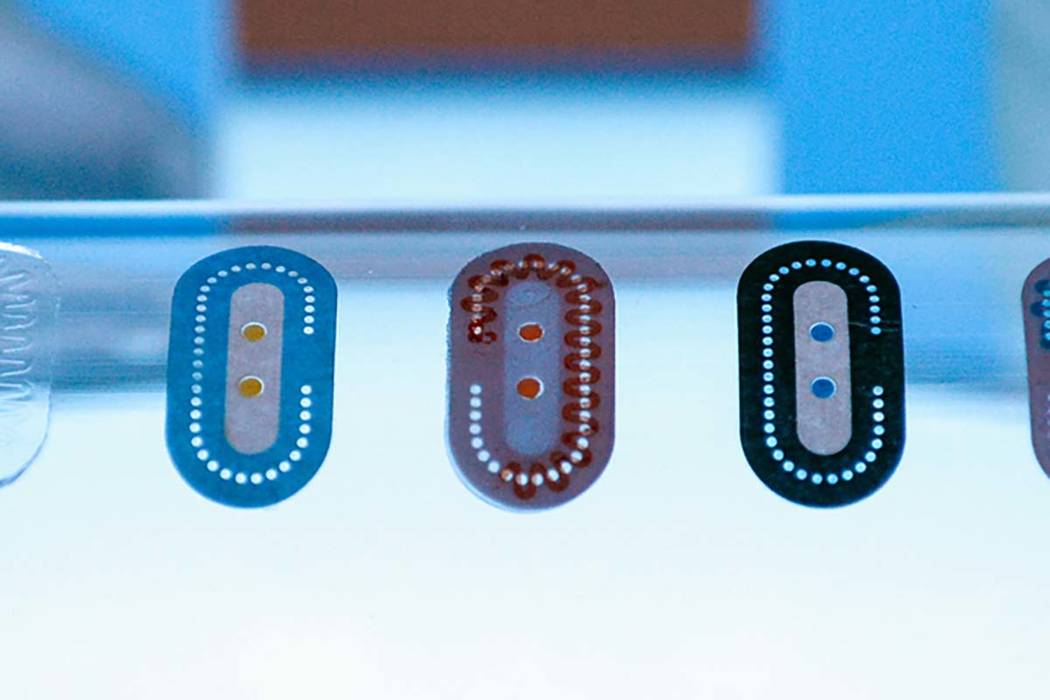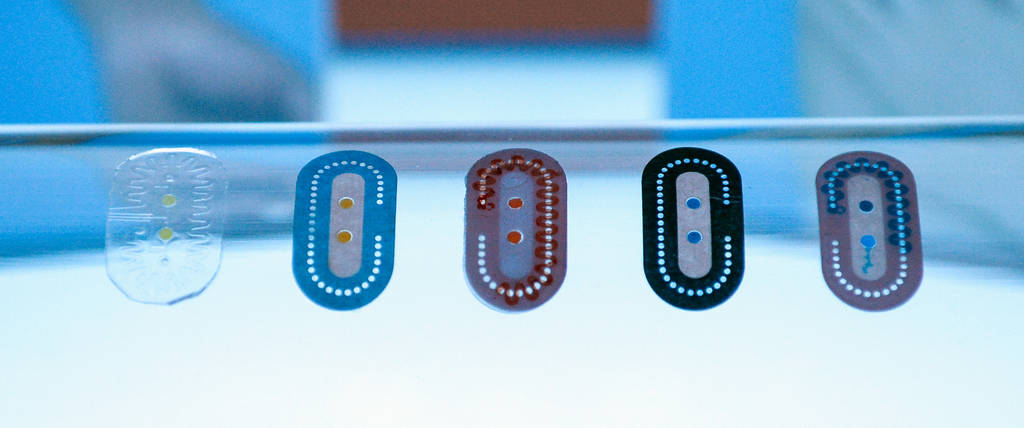CES 2019: Patch measures skin pH via sweat droplets


Over the past few years, skin tech has largely focused on measuring users’ UV exposure. This year’s evolution of beauty and wearable tech is the advent of skin pH measurement.
L’Oreal was awarded a 2019 CES Innovation Award for its product, the My Skin Track pH Wearable Sensor.
The light-weight, quarter-sized wearable measures a user’s pH level within about 15 minutes of wear. The product’s color changes to denote how basic or acidic your sweat is.
The information can help inform users with troublesome skin on the effectiveness of current and new treatments.
“Healthy skin often has a pH level of between 4.5 and 5.5,” says Guive Balooch, global vice president of L’Oreal’s Technology Incubator. “Eczematous skin is generally .5 to one level higher.”
The wearable works by adhering the patch to clean skin for 5-15 minutes.
“Microfluidics are embedded in the device,” explains Roozbeh Ghaffari, CEO of Epicore Biosystems, which develops the sweat-sensing device. “Microchannels take tiny droplets of sweat and move them into channels where they can be measured with a colormetric sensor. Before this technology, it would just evaporate.”
The device is expected to help consumers with skin concerns such as eczema, atopic dermatitis and acne determine whether topical treatments are lowering their pH levels.
“This is something academic dermatologists have known for decades,” Balooch says about the relationship between pH and eczema. “But you’ve always needed more sweat to measure it and many dermatologists can’t feasibly put their patients on a treadmill in the doctor’s office.”
After removing the patch, users can scan the image using an app on their mobile device. The app will translate the color into a pH level and suggest appropriate treatments or products.
Patients who are better informed about their skin needs can more successfully shop for cosmetic and topical treatments and make necessary changes to diet and lifestyle.
L’Oreal’s first product reveal at CES was four years ago with the My UV patch, which measured short-term UV exposure. Next, it unveiled a long-term battery-free UV wearable.
The My Skin Track pH Wearable Sensor will undergo another six to eight months of research and development before hitting the market. It will be available through dermatologists before becoming direct-to-consumer early next year.
Contact Janna Karel at jkarel@reviewjournal.com. Follow @jannainprogress on Twitter.













